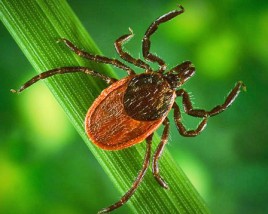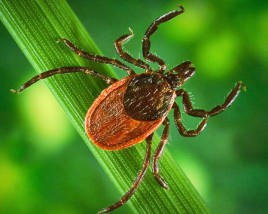How Did THAT Get Into My Lawn: Ticks!


Tick before feeding
This ugly little creature is Ixodes scapularis, more commonly known as the deer tick. It’s only one of more than 500 species of ticks world-wide with 25 of those species being found in Pennsylvania. The main reason why these parasitic arthropods are so feared is because of their propensity to transmit diseases, parasitic worms, bacteria, and viruses. The most commonly known disease they transmit is Lyme disease with our area being one of the most at risk; a virtual nightmare for parents and pet-owners. They can also transmit Rocky Mountain Spotted Fever, Tulermia, Babesiosis, Erlichiosis, and Tick Paralysis.
Generally, a tick won’t be larger than the size of a sesame seed (3 mm) unfed, but after feeding, ticks can swell up to about 11 mm. After feeding, the abdomen swells up to a greyish-blue mass. If you happen to spot one on yourself, your child, or your pet, don’t panic. There is a proper way to remove ticks to minimize the chance of the further risk. Use a pair of fine-tipped tweezers to grasp the tick, grabbing as close to the skin’s surface as possible. Pull upward with steady, even pressure. After the tick is removed, clean the area, your hands, and the tweezers with rubbing alcohol, iodine, or soap and water. Using petroleum jelly, burning or freezing them off, or using nail polish are all tick removal myths. When you find a tick, just pluck it off immediately.
How does a tick get on your lawn in the first place though? Ticks can simply walk onto your lawn or they hitch a ride on animals like opossums, rabbits, raccoons, skunks, squirrels, and their favorite, deer. If you have pets that are allowed outside, they can bring ticks onto the property as well (you can protect pets with flea & tick treatments). There are ways you can make it harder for ticks to get on your lawn though. Have applications of pesticide applied to the grass, keep excessive amounts of dead leaves and yard debris off of the landscape, keep firewood stacked neatly and in a dry area, and put up fencing to keep unwelcome animals out. If you’re able to, put up a buffer zone of wood chips or gravel around the perimeter of the property; it’s unpleasant for ticks to walk over. These blood-suckers can make being out on your lawn unpleasant or even dangerous so take precaution and always check for ticks after being exposed to any environment where they’re likely.